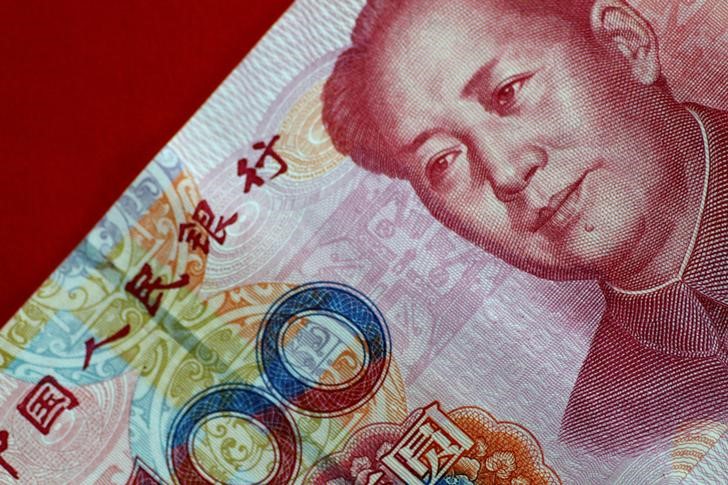Intel stock extends gains after report of possible U.S. government stake
By Ambar Warrick
Investing.com -- Most Asian currencies kept to a tight range on Monday as markets awaited more cues on U.S. monetary policy from a testimony by Federal Reserve Chair Jerome Powell, while a weaker-than-expected GDP forecast from China weighed on sentiment.
Cues on regional monetary policy are also due this week, with central bank meetings in Australia and Japan.
The yuan fell 0.1% after the Chinese government set a 2023 GDP target of 5% over the weekend. The figure was seen as lower than market expectations, and highlighted a somewhat cautious stance by Beijing over an economic recovery this year.
China’s offshore yuan fell 0.3%.
The GDP forecast offset some optimism over a Chinese economy recovery, after business activity grew at its fastest pace in over a decade in February after the lifting of anti-COVID restrictions.
Chinese trade and inflation data is due this week, and is set to offer more cues on Asia’s largest economy.
Other China-exposed currencies retreated following the weak GDP forecast. The Taiwan dollar fell 0.1%, while the Australian dollar lost 0.2%. Australia's central bank is expected to hike interest rates further to combat rising inflation.
The Japanese yen rose 0.2% ahead of the BOJ meeting on Thursday, where the bank is widely expected to hold interest rates at record lows.
The South Korean won was flat as softer-than-expected consumer inflation data for February gave more credence to the Bank of Korea’s decision to pause its interest rate hikes.
Broader Asian currencies kept to a tight range, while the dollar nursed recent losses ahead of Powell’s testimony on Tuesday. Any cues on interest rate hikes and the path of monetary policy will be closely watched.
The dollar index and dollar index futures fell less than 0.1% each on Monday.
The greenback had fallen sharply against a basket of currencies on Friday, amid some bets that U.S. interest rates will peak sooner than expected. But such a scenario is largely contingent on how inflation and the labor market will behave in the coming months.
Comments from Fed officials over the weekend suggested that interest rates will likely stay higher for longer - a scenario that is likely to limit any major upside in Asian currencies.
The region was hit hard by a spike in U.S. interest rates through 2022, with this pressure expected to continue in the near-term.
